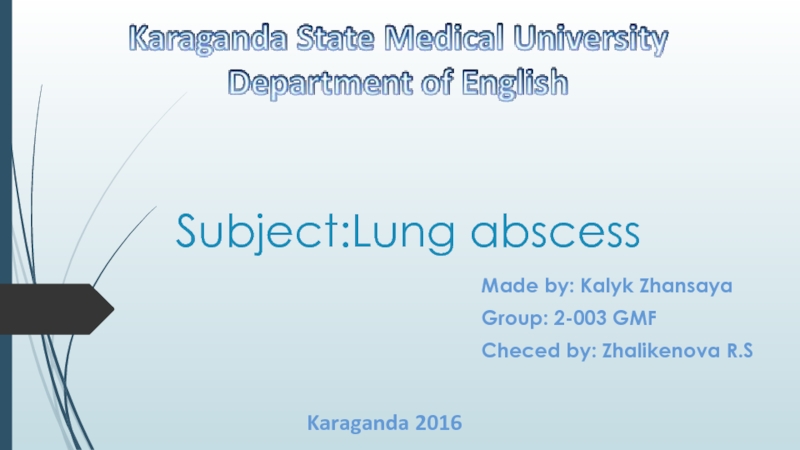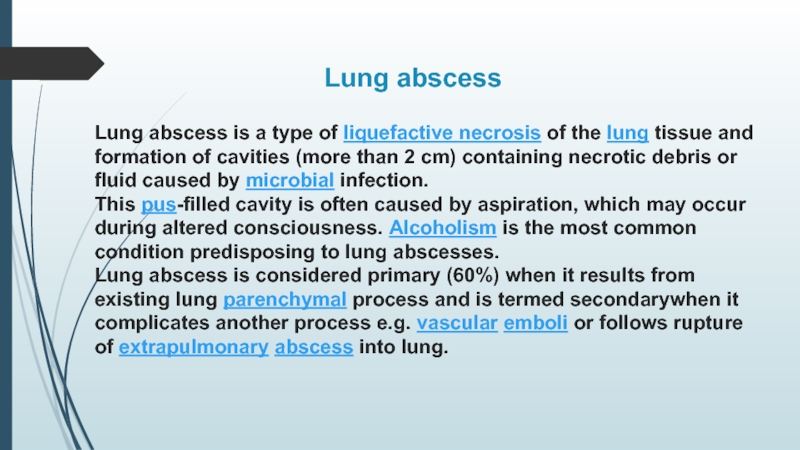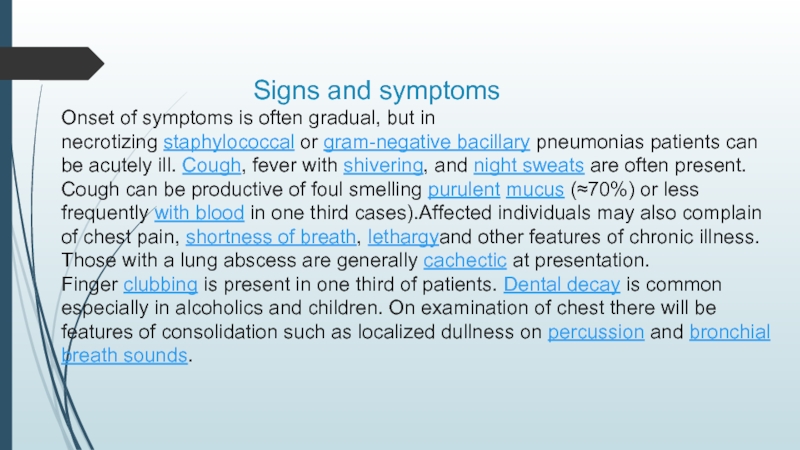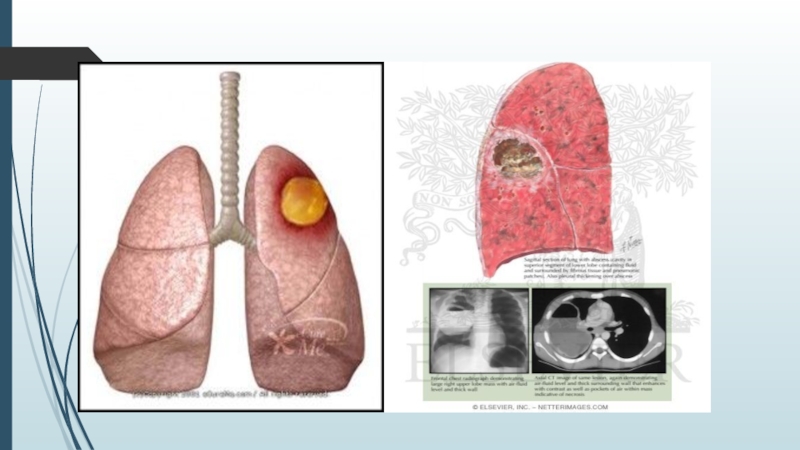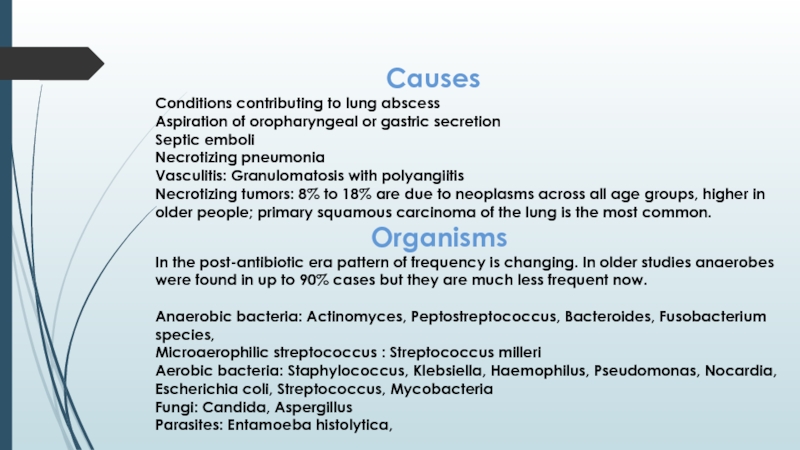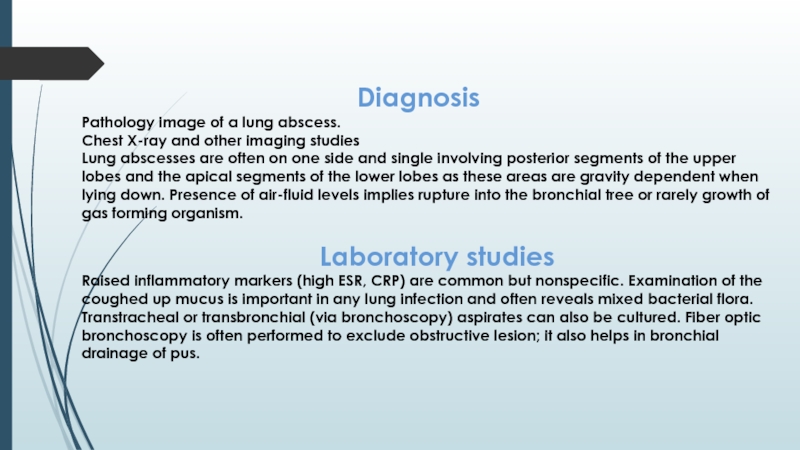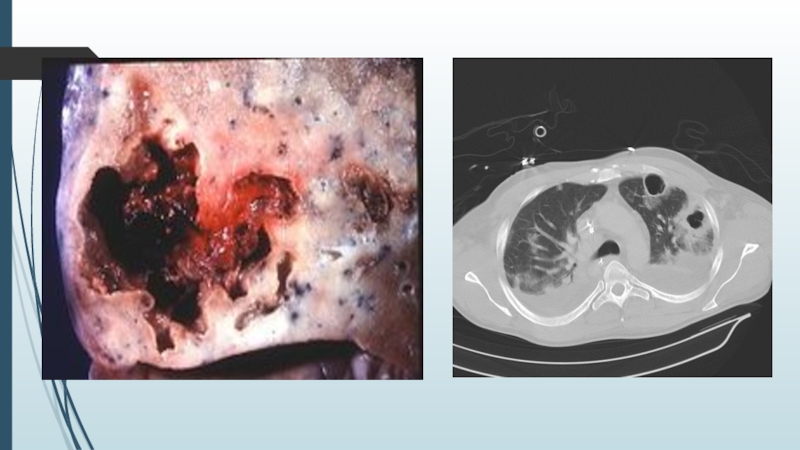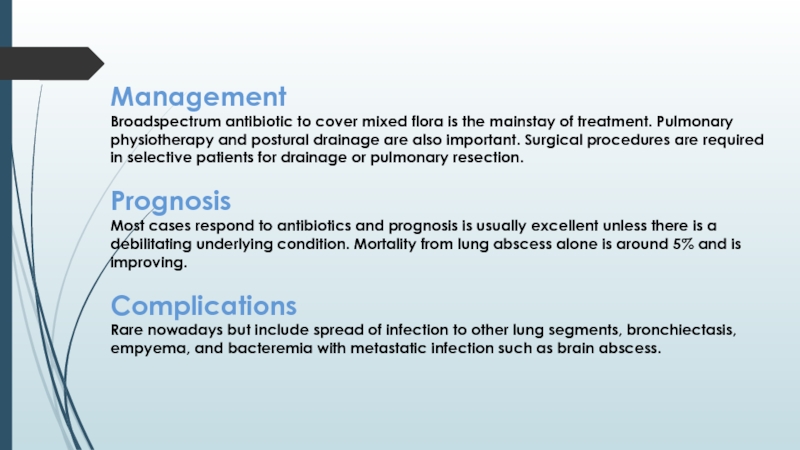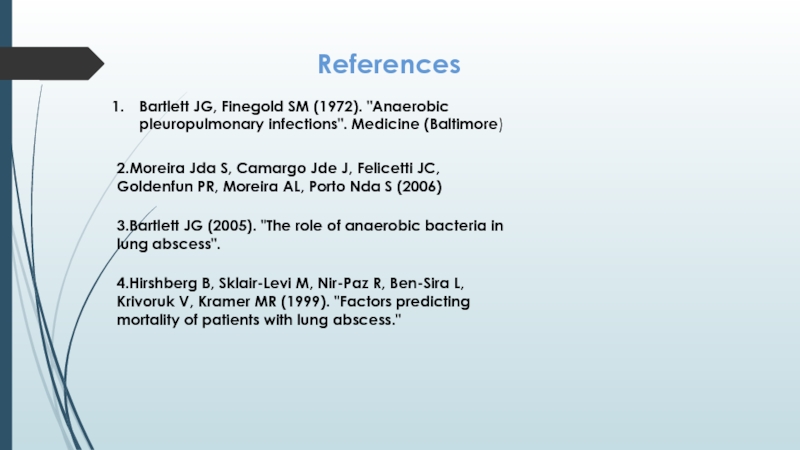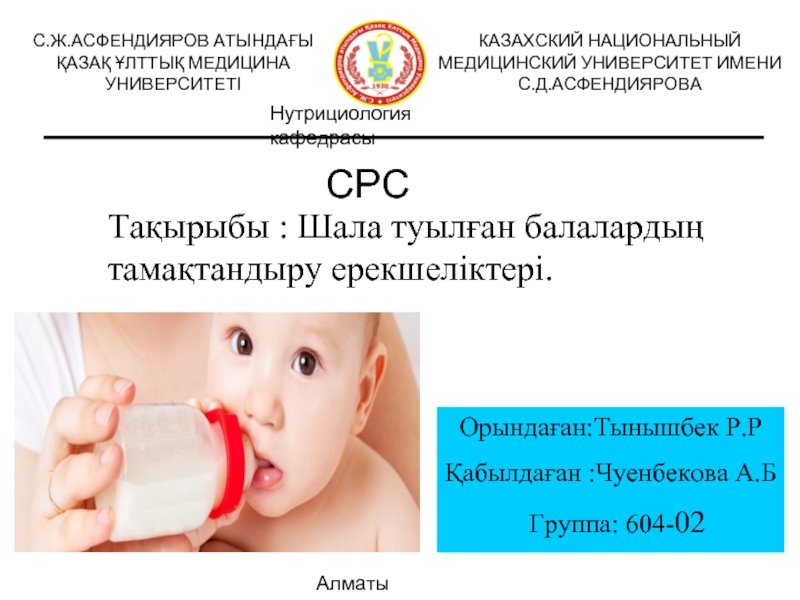- Главная
- Разное
- Дизайн
- Бизнес и предпринимательство
- Аналитика
- Образование
- Развлечения
- Красота и здоровье
- Финансы
- Государство
- Путешествия
- Спорт
- Недвижимость
- Армия
- Графика
- Культурология
- Еда и кулинария
- Лингвистика
- Английский язык
- Астрономия
- Алгебра
- Биология
- География
- Детские презентации
- Информатика
- История
- Литература
- Маркетинг
- Математика
- Медицина
- Менеджмент
- Музыка
- МХК
- Немецкий язык
- ОБЖ
- Обществознание
- Окружающий мир
- Педагогика
- Русский язык
- Технология
- Физика
- Философия
- Химия
- Шаблоны, картинки для презентаций
- Экология
- Экономика
- Юриспруденция
Subject: Lung abscess презентация
Содержание
Слайд 1Subject:Lung abscess
Made by: Kalyk Zhansaya
Group: 2-003 GMF
Checed by: Zhalikenova R.S
Karaganda 2016
Слайд 2Lung abscess is a type of liquefactive necrosis of the lung tissue and formation of cavities
This pus-filled cavity is often caused by aspiration, which may occur during altered consciousness. Alcoholism is the most common condition predisposing to lung abscesses.
Lung abscess is considered primary (60%) when it results from existing lung parenchymal process and is termed secondarywhen it complicates another process e.g. vascular emboli or follows rupture of extrapulmonary abscess into lung.
Lung abscess
Слайд 3
Onset of symptoms is often gradual, but in necrotizing staphylococcal or gram-negative bacillary pneumonias patients can be acutely ill. Cough, fever with shivering, and night sweats are often present. Cough can be productive of foul smelling purulent mucus (≈70%) or less frequently with blood in one third cases).Affected individuals may also complain of chest pain, shortness of breath, lethargyand other features of chronic illness.
Those with a lung abscess are generally cachectic at presentation. Finger clubbing is present in one third of patients. Dental decay is common especially in alcoholics and children. On examination of chest there will be features of consolidation such as localized dullness on percussion and bronchial breath sounds.
Слайд 5
Conditions contributing to lung abscess
Aspiration of oropharyngeal or gastric secretion
Septic emboli
Necrotizing pneumonia
Vasculitis: Granulomatosis with polyangiitis
Necrotizing tumors: 8% to 18% are due to neoplasms across all age groups, higher in older people; primary squamous carcinoma of the lung is the most common.
Organisms
In the post-antibiotic era pattern of frequency is changing. In older studies anaerobes were found in up to 90% cases but they are much less frequent now.
Anaerobic bacteria: Actinomyces, Peptostreptococcus, Bacteroides, Fusobacterium species,
Microaerophilic streptococcus : Streptococcus milleri
Aerobic bacteria: Staphylococcus, Klebsiella, Haemophilus, Pseudomonas, Nocardia, Escherichia coli, Streptococcus, Mycobacteria
Fungi: Candida, Aspergillus
Parasites: Entamoeba histolytica,
Слайд 6
Pathology image of a lung abscess.
Chest X-ray and other imaging studies
Lung abscesses are often on one side and single involving posterior segments of the upper lobes and the apical segments of the lower lobes as these areas are gravity dependent when lying down. Presence of air-fluid levels implies rupture into the bronchial tree or rarely growth of gas forming organism.
Laboratory studies
Raised inflammatory markers (high ESR, CRP) are common but nonspecific. Examination of the coughed up mucus is important in any lung infection and often reveals mixed bacterial flora. Transtracheal or transbronchial (via bronchoscopy) aspirates can also be cultured. Fiber optic bronchoscopy is often performed to exclude obstructive lesion; it also helps in bronchial drainage of pus.
Слайд 8Management
Broadspectrum antibiotic to cover mixed flora is the mainstay of treatment.
Prognosis
Most cases respond to antibiotics and prognosis is usually excellent unless there is a debilitating underlying condition. Mortality from lung abscess alone is around 5% and is improving.
Complications
Rare nowadays but include spread of infection to other lung segments, bronchiectasis, empyema, and bacteremia with metastatic infection such as brain abscess.
Слайд 9References
Bartlett JG, Finegold SM (1972). "Anaerobic pleuropulmonary infections". Medicine (Baltimore)
2.Moreira Jda
3.Bartlett JG (2005). "The role of anaerobic bacteria in lung abscess".
4.Hirshberg B, Sklair-Levi M, Nir-Paz R, Ben-Sira L, Krivoruk V, Kramer MR (1999). "Factors predicting mortality of patients with lung abscess."
